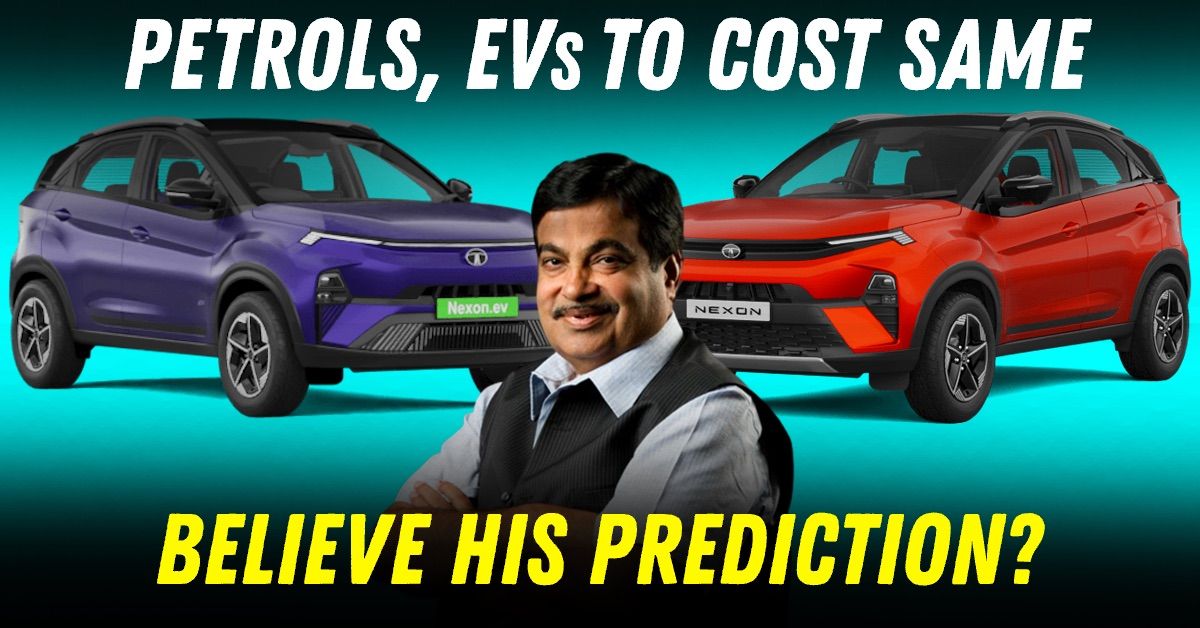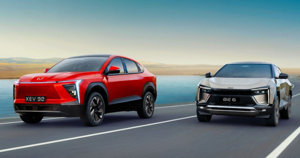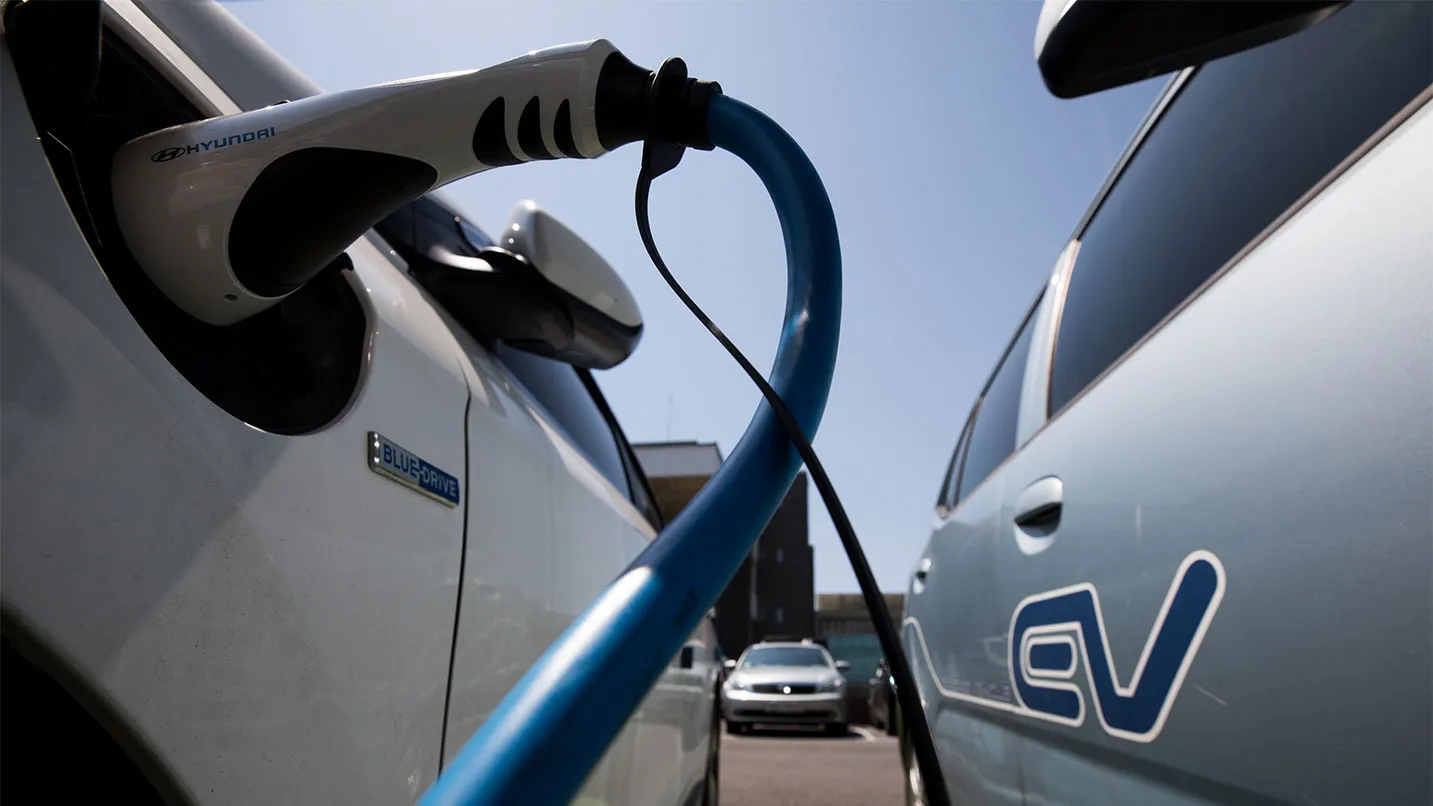
Union Road Transport and Highways Minister Nitin Gadkari on Monday said that the prices of electric vehicles (EVs) in India are likely to match those of petrol-powered vehicles within the next four to six months, as the government pushes for wider adoption of clean mobility.
Speaking at the FICCI Higher Education Summit, the minister noted that India’s annual fuel import bill of Rs 22 lakh crore was both an economic burden and an environmental challenge, making a shift towards green energy vital for the country’s growth.
Gadkari added that within the next five years, the government aims to position India’s automobile industry as the largest in the world. When he took charge as transport minister, the industry was valued at Rs 14 lakh crore, which has now grown to Rs 22 lakh crore.
Currently, the size of the US automobile industry stands at Rs 78 lakh crore, followed by China at Rs 47 lakh crore, while India is placed third with Rs 22 lakh crore, he said. The minister also highlighted the role of farmers in this transition, noting that they have earned an additional Rs 45,000 crore by producing ethanol from corn, thereby contributing to the nation’s energy security and reducing reliance on fossil fuels.
Last month, the minister launched India’s first “hydrogen highways”, accelerating the country’s green hydrogen initiatives. The project involves setting up hydrogen fueling stations along strategic national highway corridors to support long-haul hydrogen-powered freight.
The fuel of the future is hydrogen, and we have now started the first extensive hydrogen truck trials in history. “A budgetary allocation of Rs 500 crore has been sanctioned to five consortia across ten routes, with 37 electric vehicles participating,” Gadkari stated during the event.
These trials will be supported by the establishment of nine hydrogen refueling stations. He went on to say that these corridors will be India’s first hydrogen highways, establishing the framework for long-distance, clean transportation. He emphasized the need for India to immediately lessen its reliance on imports of crude, which currently account for 87 per cent of demand and cost the country close to Rs 22 lakh crore a year.

Impact and Government Strategy
-
Gadkari reiterated the importance of reducing India’s reliance on fossil fuels, which currently costs the economy about ₹22 lakh crore annually in imports.
-
Price parity is expected to remove the biggest barrier to EV adoption and accelerate the shift to clean mobility, with consumers able to buy electric vehicles (EVs) for the same price as comparable petrol models, especially in the small and mid-size segments.
-
The government has backed this transition with extensive plans for charging infrastructure expansion and clean energy programs, aiming to make India the largest automobile market globally in the next five years.
Uncertainties and Challenges
-
Battery price reductions and scale of local manufacturing are driving optimistic forecasts, but experts caution that readiness of infrastructure and consumer trust are critical for sustained adoption.
-
Some analysts note that potential increases in petrol vehicle prices and the continued expansion of the charging network could also play a role in achieving parity.
Summary Table
| Factor | Contribution to Parity |
|---|---|
| Battery cost reduction | Major driver |
| Domestic battery manufacturing | Reduces production and logistics costs |
| FAME-II, PLI, GST incentives | Tax/price support for EVs |
| Expansion of charging stations | Boosts consumer trust and adoption |
| Fall in overall EV component costs | Lowers manufacturing expenses |
This rapid anticipated parity will revolutionize the Indian auto market, boosting the share of electric vehicles and supporting national goals for sustainable development and reduced oil dependency.
Battery Cost Trends and Drivers
-
Lithium-ion battery pack prices fell by about 20% from 2023, now reaching a global average of $115 per kWh, with China seeing even lower prices at $94 per kWh.
-
Raw materials (lithium, cobalt, nickel) are the key drivers of battery cost. More lithium mining and greater supply, paired with a softening demand, has caused price drops.
-
Manufacturing advances, factory automation, and large-scale production have improved efficiency and output, lowering per-unit battery costs for Electric Vehicles (EVs) makers.
Impact of Supply Chain Changes
-
Oversupply in battery manufacturing, especially in China, is forcing prices down due to intense competition among manufacturers, shrinking their margins and further reducing costs for automakers and consumers.
-
Geopolitical factors, such as tariffs and trade policies, affect the pricing of raw materials and finished batteries. Temporary supply chain tightness can cause fluctuations, but the trend has lately favored lower costs.
-
Improved local sourcing and investments in mining/processing have cut logistics and import expenses, making Indian, American, and European EV batteries cheaper.
Conclusion
-
Dropping battery prices, technological advancements, and streamlined global supply chains have allowed Electric Vehicles manufacturers to offer lower sticker prices, pushing EVs much closer to petrol vehicle price parity in India and globally.
-
Future risks remain—if mineral prices spike or supply chains are disrupted, battery and EV prices could temporarily increase again.
- Electric vehicles prices in India are expected to match petrol vehicle prices within the next four to six months, marking a significant shift in affordability and market dynamics.
